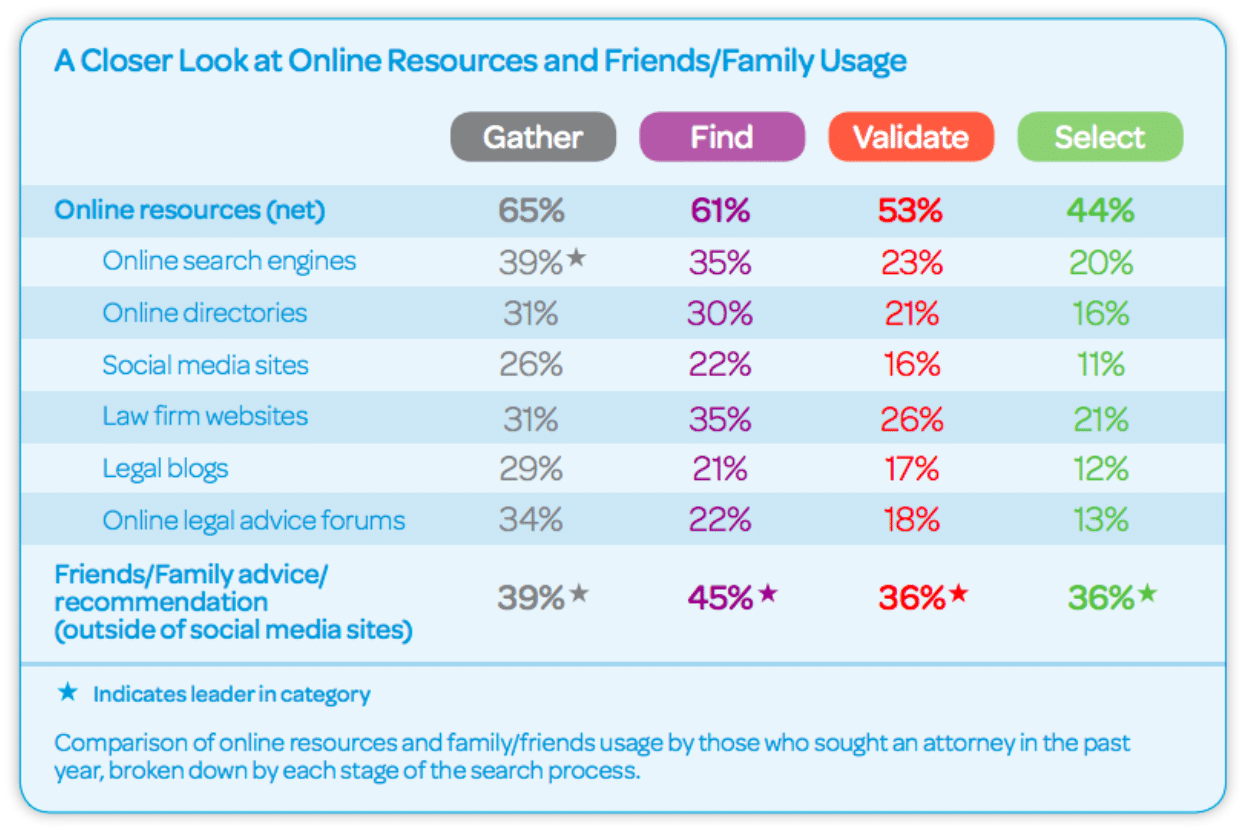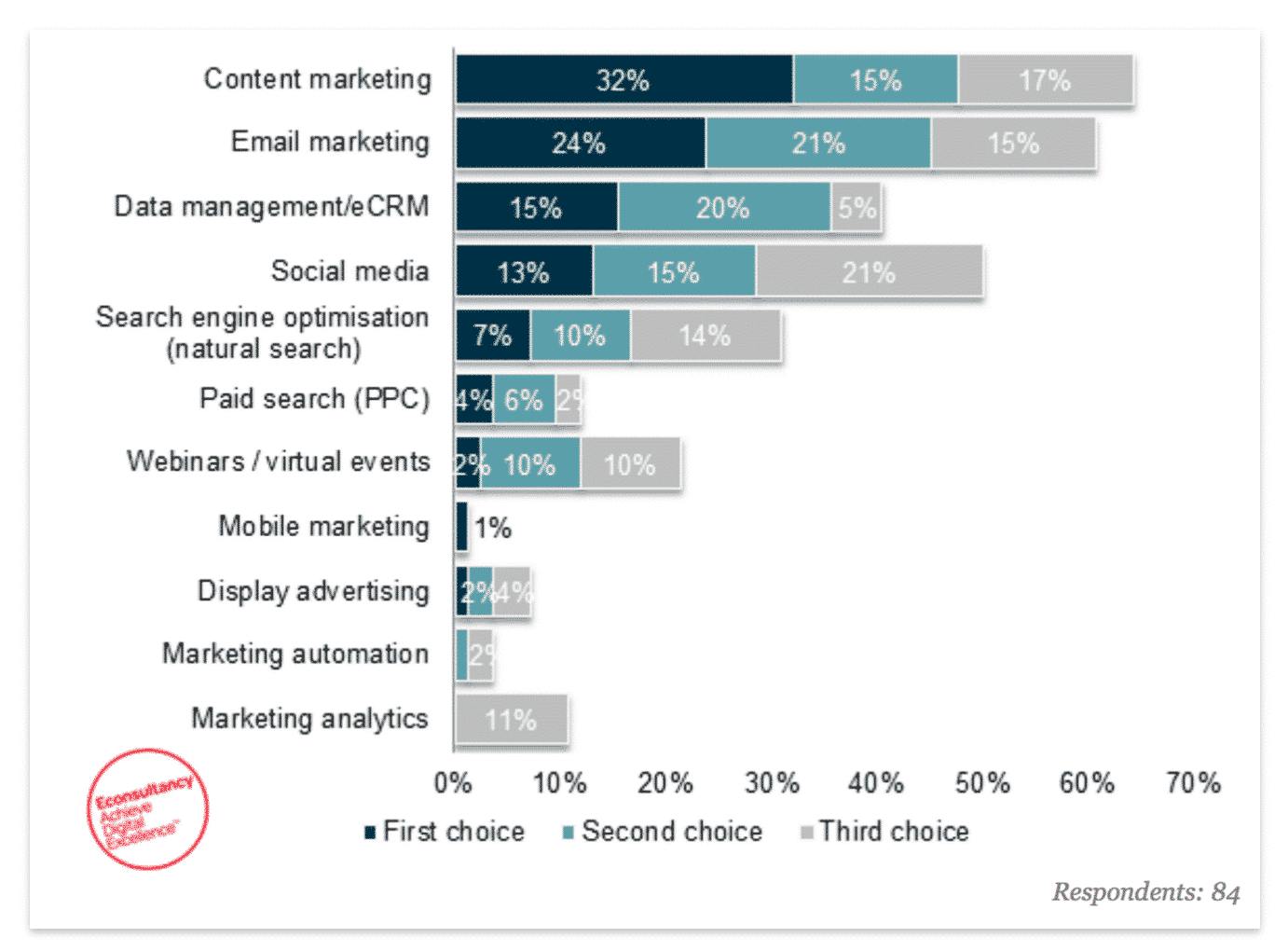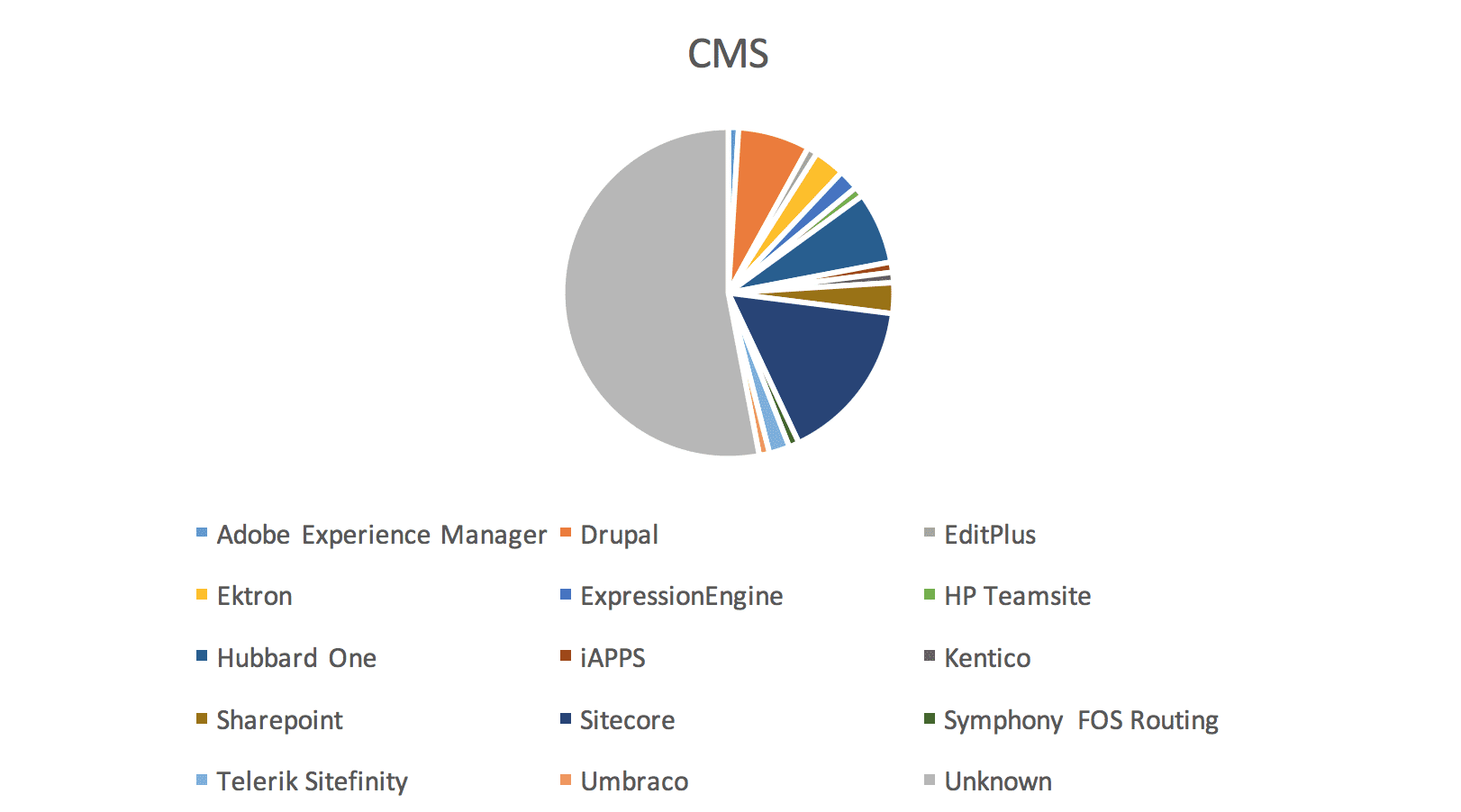
The way that businesses and individuals seek out information on the most suitable providers of legal services for their needs has changed dramatically in the last few years.
A 2012 study by The Research Intelligence Group found 76% of 4,000 adults surveyed used online resources during the search for a lawyer.

Although large commercial firms are very different in that they are well known, often receive business from referrals and tend to focus on growing relationships – there’s no doubt that digital marketing is becoming increasingly important to these firms as well.
As a result, firms in the legal services industry are increasingly adopting new technologies and practices in order to reach consumers in the digital age.
A recent study by Econsultancy in association with The Lawyer showed that digital marketing approaches are increasingly being favored by the top law firms to attract new customers and retain existing ones.
Of all the approaches, content marketing was viewed by law firms as the most effective, followed by email marketing, eCRM, social media, SEO and PPC.

These reports suggest that law firms are beginning to use a wide variety of tactics to remain competitive – but which firms are leading the way?
We’ve analyzed the websites for the top 100 global law firms by revenue to find out which technologies and digital marketing approaches are being used to attract and retain customers online and differentiate themselves from their competitors.
Content management
Some of the top 100 law firms have invested heavily in the technology to manage their digital assets with many firms choosing to deploy off-the-shelf enterprise content management systems.
Of the sites we analyzed using the BuiltWith technology lookup service, 53% were either custom built websites or using a CMS that BuiltWith was unable to recognize.
16% of sites were built on the Sitecore experience management platform. These include Baker & McKenzie, Morgan Lewis, Hogan Lovells, Ropes & Gray and Herbert Smith Freehills amongst others.
Sitecore is regarded as a leader in web content management by Gartner and the system provides not only content management but digital asset management, personalization, A/B and multivariate testing, lead scoring and nurturing, analytics and automation and comes with a significant price tag.
The second most popular CMS is Hubbard One – previously owned by Thomson Reuters but now managed by the US marketing agency One North which has launched websites and interactive solutions for over 40% of the NLJ 250. Around 7% of the top 100 law firms were using One North technology to power their sites including Reed Smith, Dechert and Proskauer.
Drupal, the free open source CMS platform built on PHP, was also a popular choice – responsible for the management of content on another 7% of top firms. Drupal is known for its reliable performance, security and flexibility but has none of the advanced features of platforms like Sitecore built in. Skadden, Arps, Slate, Meagher & Flom, White & Case and Davis Polk were among the firms powering their sites using Drupal.
Of the rest, 3% of the site were built on Ektron – including Freshfields and WilmerHale, 3% on Microsoft Sharepoint – such as Allen & Overy and Gibson Dunn and a few other firms were using Telerik Sitefinity (2%) and Expression Engine (2%). Of the remaining sites, other content management platforms include Adobe Experience Manager (Clifford Chance), HP Teamsite (Eversheds) and Umbraco (Paul, Weiss, Rifkind, Wharton & Garrison).
What’s surprising is that none of the top 100 law firms were using WordPress despite the platform being free and also currently the world’s most popular content management system.
This may be due to the importance of security to the top law firms and the perception that WordPress might be less secure and more prone to hacking than other free content management systems such as Drupal.

Top content management systems used by the top 100 law firms
As well as investing in CMS platforms and digital asset management technology, the majority of the top 100 law firms (62%) feature a blog on their site. This seems to confirm the importance of content marketing as a digital approach that law firms are increasingly using to educate and inform clients.
Marketing automation
Marketing automation refers to software that automates some repetitive tasks such as email marketing to individuals or user groups, social media posts and the delivery of personalized messaging and content. The technology of marketing automation makes these tasks significantly easier.
There has been a huge increase in the number of businesses using marketing automation software in the last two years.
Marketing automation is built into many enterprise content management systems such as Sitecore and Adobe Experience Manager, but there are also many software providers that specialize in marketing automation and a few of the top law firms currently have these services installed on their sites.
Orrick, Pillsbury and BLP are all using the technology provided by the market leader in marketing automation – Hubspot. WSGR has opted for Marketo, another large provider of automation solutions, and Paul Hastings has implemented Eloqua, Oracle’s answer to marketing automation, to help them engage with users on their website.
However, compared to businesses in other sectors such as software providers or marketing agencies, legal firms are not taking full advantage of the benefits of marketing automation. With a few firms leading the way, however, it will be interesting to see how this changes in the near future.
PPC
PPC (pay per click) is an advertising model where you pay a search engine to show your advertisements in premium positions on search results and pay a fee for every click on one of these ads to the relevant search engine.
Smaller, general practice firms are now spending a great deal of money on PPC activity.
Terms related to the legal sector second only to those related to finance as the most expensive key words with costs per click of up to $42. According to Wordstream, the top 10 most expensive keywords in Adwords, Google’s ad platform, are:
| 1 | Insurance | $54.91 |
| 2 | Loans | $44.28 |
| 3 | Mortgage | $47.12 |
| 4 | Attorney | $47.07 |
| 5 | Credit | $36.06 |
| 6 | Lawyer | $42.51 |
| 7 | Donate | $42.02 |
| 8 | Degree | $40.61 |
| 9 | Hosting | $31.91 |
| 10 | Claim | $33.19 |
Of the top law firms, we were able to find 14 that were actively advertising their services using Google Adwords. Of these, most were running local campaigns focused on legal services within a specific city or town.
One global firm was running ads bidding on local keyphrases such as “legal firms Toronto” and “Toronto law firm” at an estimated cost of $8-$9 according to SpyFu. Another firm appeared to be targeting Washington lobbyists in a campaign using key terms such as “Washington lobbying firms” and “business lobbyist”. One firm was even using PPC advertising as a means to recruit new associates.
But, on the whole, the use of paid search to target search engine users is not as widespread in the legal services sector as in other industries such as finance and insurance.
SEO
Search engine optimization (SEO) is hugely important for any business that wants to succeed online. Rather than relying on constantly pumping money into ad campaigns targeting certain key terms, businesses can begin to lower their acquisition costs by optimizing their sites for their most profitable terms and obtaining organic positions for these terms in the natural search results. This means more qualified traffic to their websites, more leads and therefore increased revenues and profits.
Most enterprise content management systems have features included that help ensure that a website is optimized for search engines. However, not all law firms have optimized their sites for search engines.
Despite the top 100 law firms investing heavily in technology to power their websites, many of these firms have overlooked some basic elements that contribute to a good search ranking.
Over 50% of the top 100 law firms’ websites are missing a main heading (h1) element on the homepage, 32% have no meta description tag and 73% have neglected to or incorrectly implemented the canonical and hreflang attributes. Furthermore, 86% of the sites are missing Open Graph meta tags which impacts negatively on the performance of links on social media networks.
Social media
Most of the firms analyzed have embraced social media marketing to some extent. Twitter is the most popular social media networks used by the top 100 law firms.
80% of the websites of the top 100 law firms have a link to or feed from their Twitter profiles.
LinkedIn is also a very popular choice with 79% of the top law firm having a link to their LinkedIn profiles – either for the company or individual associates – on the website. 60% of sites had some sort of link to a Facebook page or social media sharing options for Facebook users. Google Plus was the least popular social media network with just 30% of the top 100 law firms including a link or sharing options for Google Plus.
Analytics
In order to monitor activity and measure the success of digital marketing approaches, businesses need to ensure that they have web analytics packages installed on their sites.
Most of the top 100 law firms have opted to use Google Analytics to track their website visitors (85%). Google Analytics is free, but provides a huge range of features and custom options for tracking users across websites and mobile apps so is a good choice for most businesses.
But, unlike other analytics providers, the Google Analytics terms of service does not allow the capturing data in a way that allows reporting at an individual user level.
Some firms are choosing to use alternative packages such as WebTrends, Omniture or Piwik, and in some cases are even running them in tandem with Google Analytics.
Akin Gump is using Piwik instead of Google Analytics, while Bryan Cave and Sheppard Mullin have opted to use both. Allen & Overy, Linklaters, Herbert Smith Freehills and Orrick have decided to use both Google Analytics and WebTrends, while Kilpatrick Townsend has opted to track its website visitors with Omniture SiteCatalyst, the analytics package owned by Adobe.
Aside from standards web analytics, 8% of the top 100 law firms are using CrazyEgg – an analytics package that includes heat maps and scroll maps to allow businesses to determine where people hover, click and scroll to on the site. This adds an additional layer of analysis allowing user experience issues on specific pages to be identified and resolved. Sites using CrazyEgg include Skadden, Simpson Thacher and Quinn Emanuel amongst five others.
Conclusion
In recent years, law firms have certainly invested heavily in technology like CMSs, analytics packages and marketing automation software. It is commendable that these firms are striving to keep up with the latest trends in digital marketing – however, the deployment of technology alone is no guarantee of success. And there are some basic errors, particularly in on-page SEO, which could negatively impact on their online performance.














